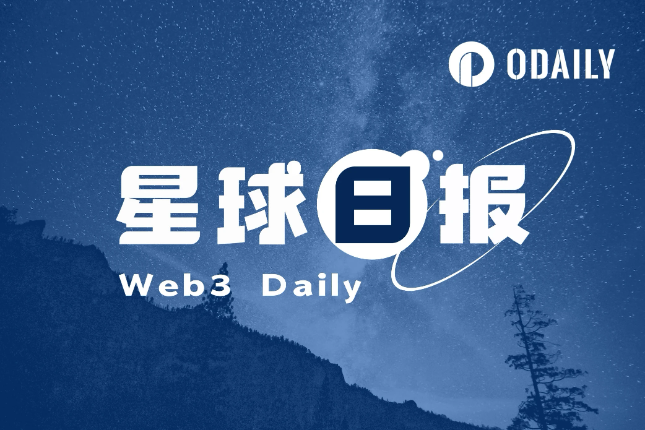“学习区块链的最快方法就是自己亲手搭建一个”
本文接上篇:手把手教你搭建区块链(上)
”了解工作量证明“
工作量证明算法(PoW)是在区块链上创建或挖掘新区块的方式。
PoW的目标是发现可以解决问题的数字。从计算机的角度来讲,该数字必须既要很难找到又要易于验证。这是工作量证明的核心思想。
我们将看一个非常简单的示例来帮助您深入了解,某个整数x乘以另一个y的哈希必须以0结尾的函数表达为:
hash(x * y)= ac23dc...0
对于这个示例,让我们设x = 5,则代码如下:
from hashlib import sha256
x = 5
y = 0 # We don't know what y should be yet...
while sha256(f'{x*y}'.encode()).hexdigest()[-1] != "0":
y += 1
print(f'The solution is y = {y}')
运行代码后的结果为y =21(产生的哈希以0结尾)
hash(5 * 21) = 1253e9373e...5e3600155e860
在比特币中,工作量证明算法称为Hashcash。,与我们刚才运行的基本示例代码并没有太大不同。这就是矿工竞相创建新区块的算法。通常,难度由字符串中搜索的字符数决定。通过在transaction中获得btc,矿工获得了解题的奖励,整个网络也能够轻松验证其答案。

让我们为我们上一篇文章中搭建的区块链实现类似的算法,例如:找到一个数字p,当该数字与上一个块的答案进行哈希运算时,会产生一个带有4个前导0的哈希值
import hashlib
import json
from time import time
from uuid import uuid4
class Blockchain(object):
...
def proof_of_work(self, last_proof):
"""
Simple Proof of Work Algorithm:
- Find a number p' such that hash(pp') contains leading 4 zeroes, where p is the previous p'
- p is the previous proof, and p' is the new proof
:param last_proof: <int>
:return: <int>
"""
proof = 0
while self.valid_proof(last_proof, proof) is False:
proof += 1
return proof
@staticmethod
def valid_proof(last_proof, proof):
"""
Validates the Proof: Does hash(last_proof, proof) contain 4 leading zeroes?
:param last_proof: <int> Previous Proof
:param proof: <int> Current Proof
:return: <bool> True if correct, False if not.
"""
guess = f'{last_proof}{proof}'.encode()
guess_hash = hashlib.sha256(guess).hexdigest()
return guess_hash[:4] == "0000"
要调整算法的难度,我们可以修改前导零的数量。但是4就足够了。您会发现,添加单个前导零将极大地缩短寻找答案所需的时间。
STEP 2 :以API与Blockchain交互
我们将使用Python Flask框架。这是一个微框架,可轻松将端点映射到Python函数。这使我们可以使用HTTP请求通过网络与我们的区块链进行对话。
我们先创建三个方法:
#to create a new transaction to a block.
/transactions/new
#to tell our server to mine a new block.
/mine
#to return the full Blockchain
/chain
在我们的区块链网络中生成单个节点:
import hashlib
import json
from textwrap import dedent
from time import time
from uuid import uuid4
from flask import Flask
class Blockchain(object):
...
# Instantiate our Node
app = Flask(__name__)
# Generate a globally unique address for this node
node_identifier = str(uuid4()).replace('-', '')
# Instantiate the Blockchain
blockchain = Blockchain()
@app.route('/mine', methods=['GET'])
def mine():
return "We'll mine a new Block"
@app.route('/transactions/new', methods=['POST'])
def new_transaction():
return "We'll add a new transaction"
@app.route('/chain', methods=['GET'])
def full_chain():
response = {
'chain': blockchain.chain,
'length': len(blockchain.chain),
}
return jsonify(response), 200
if __name__ == '__main__':
app.run(host='0.0.0.0', port=5000)
为了便于理解,我再补充一些上面代码的简要中文注释:
·第15行:实例化我们的节点
·第18行:为我们的节点创建一个随机名称
·第21行:实例化我们的Blockchain类
·第24–26行:创建/mine,这是一个GET请求
·第28–30行:创建/transactions/new(这是POST请求),因为我们将向其发送数据
·第32–38行:创建/ chain,返回完整的Blockchain
·第40-41行:在端口5000上运行
以下是用户发送交易请求到服务器的示例代码:
{
"sender": "my address",
"recipient": "someone else's address",
"amount": 5
}
由于我们已经有了用于将事务添加到块中的类方法,因此其余操作很容易。让我们编写添加交易的功能:
import hashlib
import json
from textwrap import dedent
from time import time
from uuid import uuid4
from flask import Flask, jsonify, request
...
@app.route('/transactions/new', methods=['POST'])
def new_transaction():
values = request.get_json()
# Check that the required fields are in the POST'ed data
required = ['sender', 'recipient', 'amount']
if not all(k in values for k in required):
return 'Missing values', 400
# Create a new Transaction
index = blockchain.new_transaction(values['sender'], values['recipient'], values['amount'])
response = {'message': f'Transaction will be added to Block {index}'}
return jsonify(response), 201
最后,我们挖矿只需要做三件事:
1、计算工作量证明
2、通过添加一笔交易来奖励矿工(也就是我们)
3、将新块添加到链中
import hashlib
import json
from time import time
from uuid import uuid4
from flask import Flask, jsonify, request
...
@app.route('/mine', methods=['GET'])
def mine():
# We run the proof of work algorithm to get the next proof...
last_block = blockchain.last_block
last_proof = last_block['proof']
proof = blockchain.proof_of_work(last_proof)
# We must receive a reward for finding the proof.
# The sender is "0" to signify that this node has mined a new coin.
blockchain.new_transaction(
sender="0",
recipient=node_identifier,
amount=1,
)
# Forge the new Block by adding it to the chain
previous_hash = blockchain.hash(last_block)
block = blockchain.new_block(proof, previous_hash)
response = {
'message': "New Block Forged",
'index': block['index'],
'transactions': block['transactions'],
'proof': block['proof'],
'previous_hash': block['previous_hash'],
}
return jsonify(response), 200
请注意,已开采区块的接收者是我们节点的地址。
而且,我们在这里所做的大部分工作只是与Blockchain类上的方法进行交互。
至此,我们已经可以开始与我们的区块链进行交互了~如果您好奇共识算法是如何实现的,且听下回分解~








